Introduction to the Cochasqui Archaelogical Park
A visit to Cochasqui is another attraction belonging to the long list of Things to Do around Otavalo. Highly recommended for history buffs, but also for people who love nature, the free air & spectacular views all around.
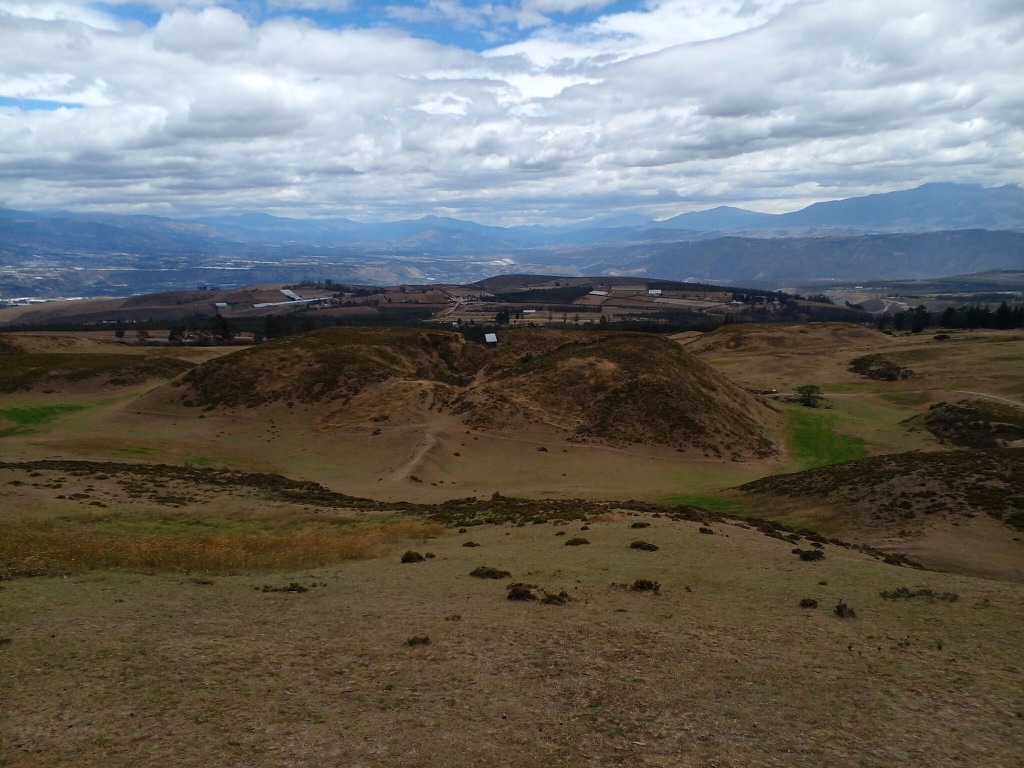
Location of Cochasqui
The site is located just in the middle of the Andean market town Otavalo and Ecuador’s capital Quito. Easily reachable from either side – about an hour’s drive. Or else, worth a stop on the way to or from the famous Andean market town.
Cochasquí is the biggest pre-Inca site in the northern part of Ecuador. The park (84 hectares/ 208 acres) covers far more terrain than the area you can actually visit.
The former settlement was built on the flanks of the Mojanda Lake area. A natural park which covers the border of two Ecuadorian provinces, Pichincha & Imbabura.
- Less than a century ago travellers still crossed the Mojanda Lake area on foot or horseback to go from the capital to the north – and on to Colombia – or vice versa. Nowadays it’s mainly a tourist attraction for hikers, who like to hike & conquer the Fuya Fuya volcano.

View of the surrounding area of the Archaeological site of Cochasqui.
The views from the Cochasqui park are spectacular. Soon you’ll understand why people built the pyramids in this area. From the highest point you’ll have a 240° panoramic view of the valley below & the sky above.
On a clear day you can spot Quito to the south. Mt. Cayambe (5790m/ 18996ft) to the north. Mt. Cotopaxi (5897m/ 19347ft) & maybe even Mt. Chimborazo (6310m/ 20702ft) to the south. The three highest mountains of Ecuador. All snow covered ..still!
TravelTip: Cochasqui is located just above 3000m/9840ft altitude. Something you’ll notice soon enough when you walk around & follow the guide. No worries. The altitude doesn’t affect most people. Still, be prepared. Watch your breath, and – if you can – take a break once in a while.
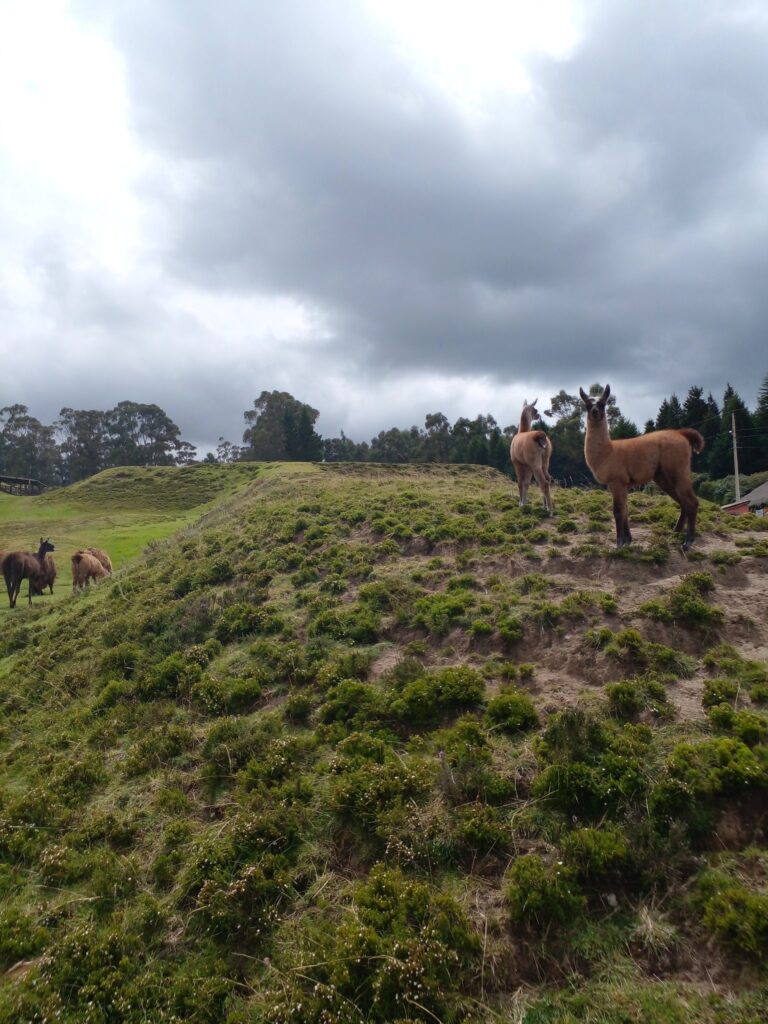
To “Measure the Earth”
To the northeast of Cochasqui you can spot the Pambamarca mountain range, which I described in an earlier post. Also an area marked by history.
Primarily because you still can find some old remains of former strongholds or fortresses – the so called Pucarás – in Pambamarca. But secondarily because the French Geodesic Mission visited the area almost three centuries ago. An expedition in which a select group of eminent French scientists came to Ecuador to “Measure the Earth”.
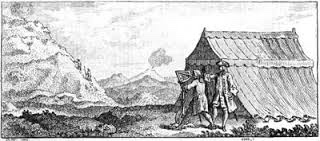
I found the story so interesting, I wrote a book – in Dutch – about the whole project, but also several blog posts (if interested, go to: Intro to the French Mission).
- The intro + posts (4) may serve you a nice introduction to Ecuador. Did you know, for example, that the French visitors secretly gave the country its name?
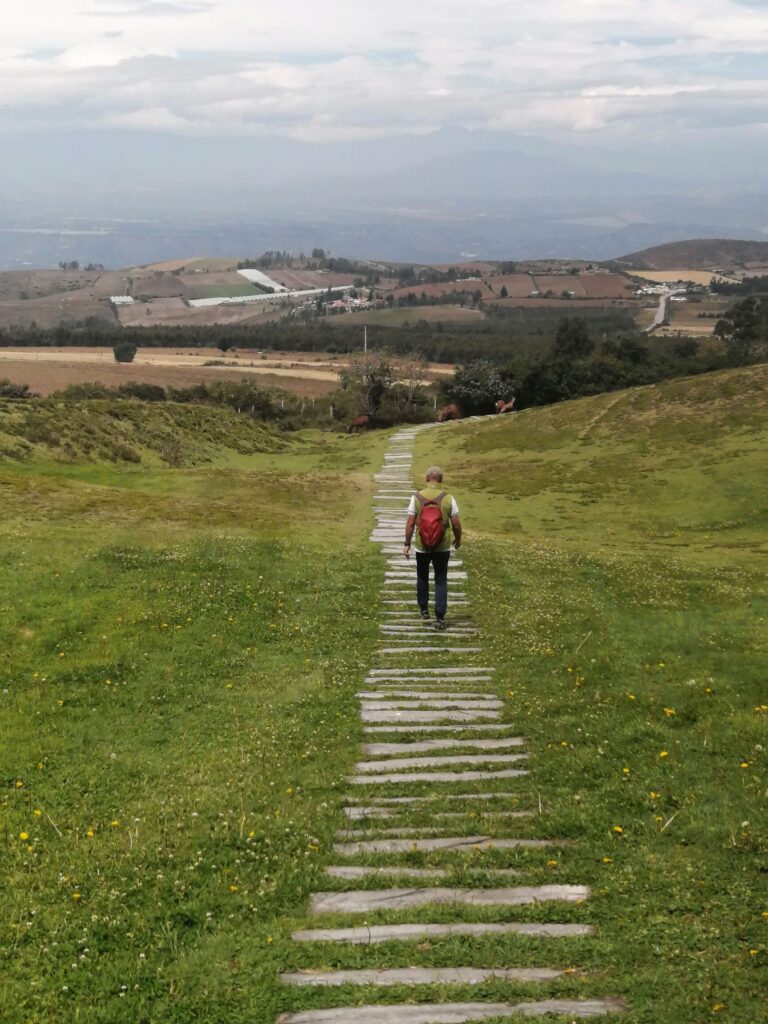
Overview of the Cochasqui archaeological site
In the central part of Cochasqui – the area you visit with a guide – you’ll find 15 pyramids. All of them have one or sometimes two long ramps leading to the top.
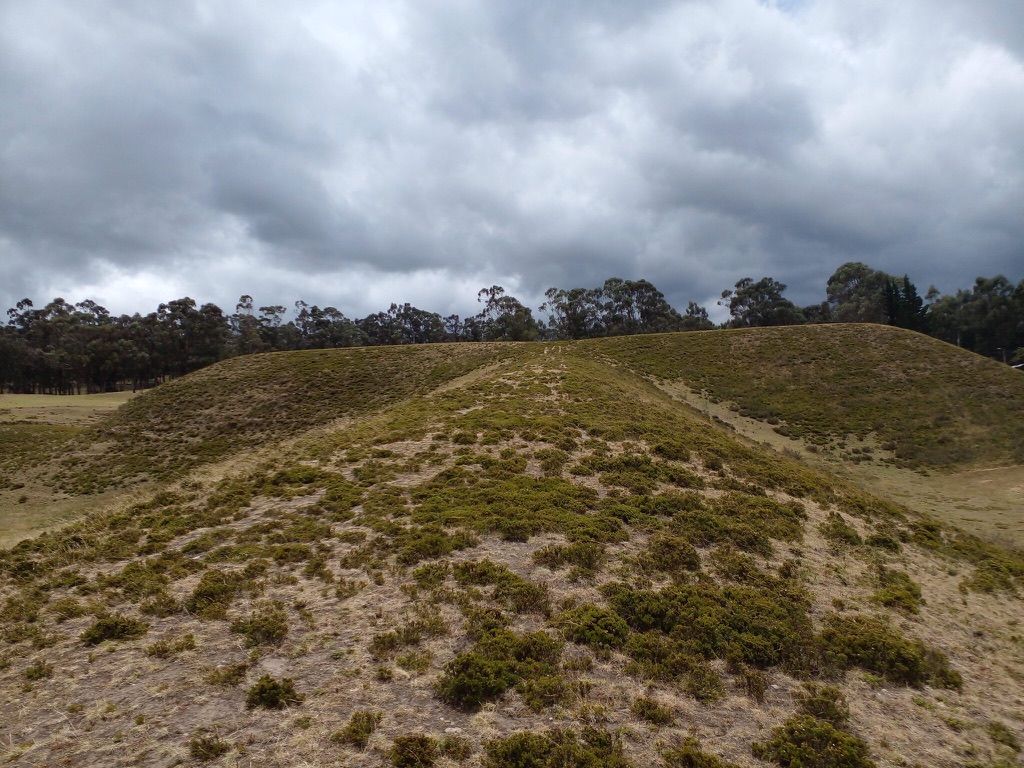
- Some of these ramps were severely damaged in the past. The ramp of the highest pyramid was destroyed by former owners of the terrain who were – still (!) – looking for gold (You can see the damage of this pyramid (#9) on the first picture of this post, under Introduction).
- Others were damaged because of the harsh climate of the Andean highlands. Especially if you know that the soft natural building materials – so called Cangahua & Chocoto – were very vulnerable to wind & rain. You can observe the building material in several roof-covered spots.
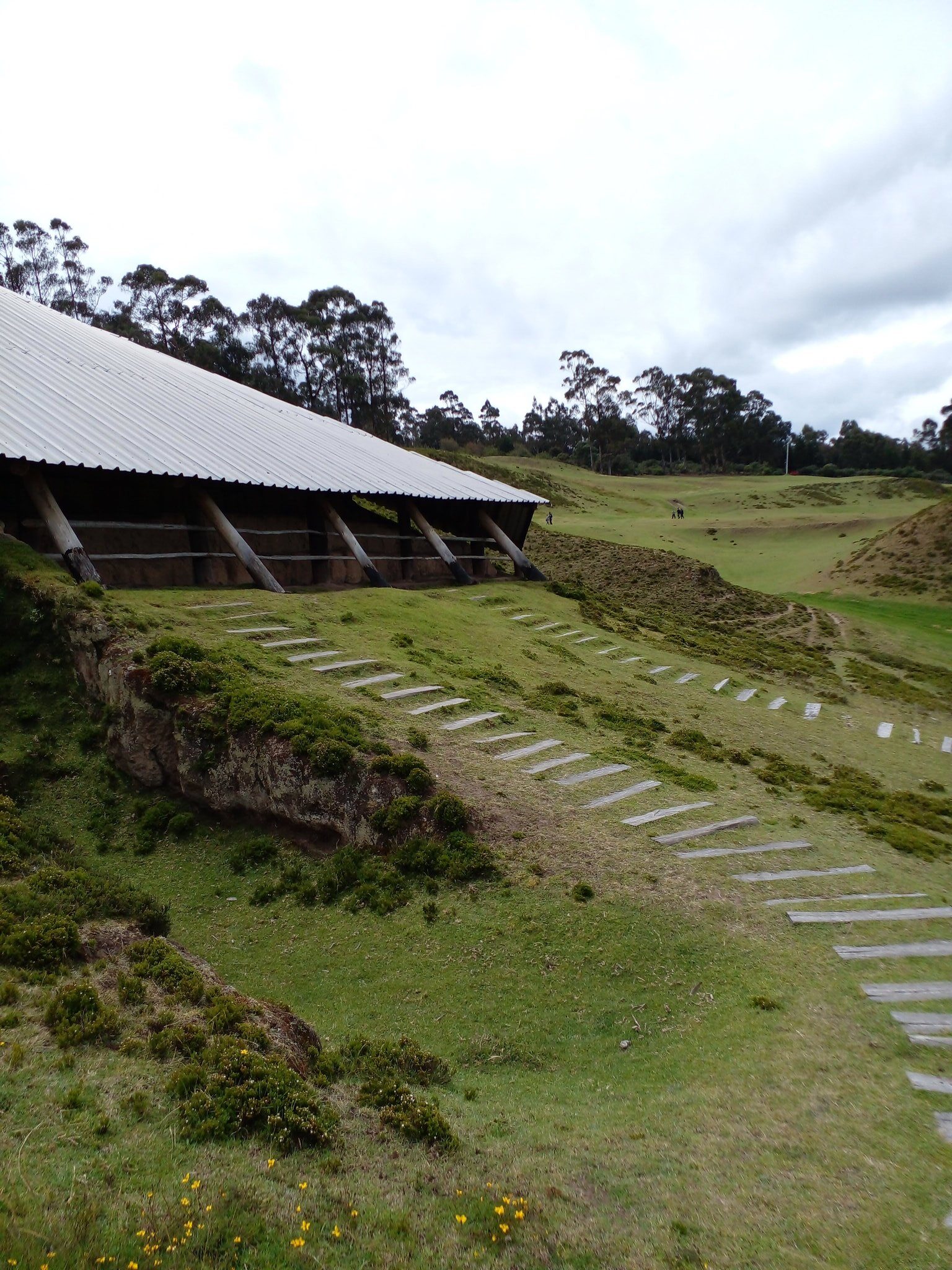
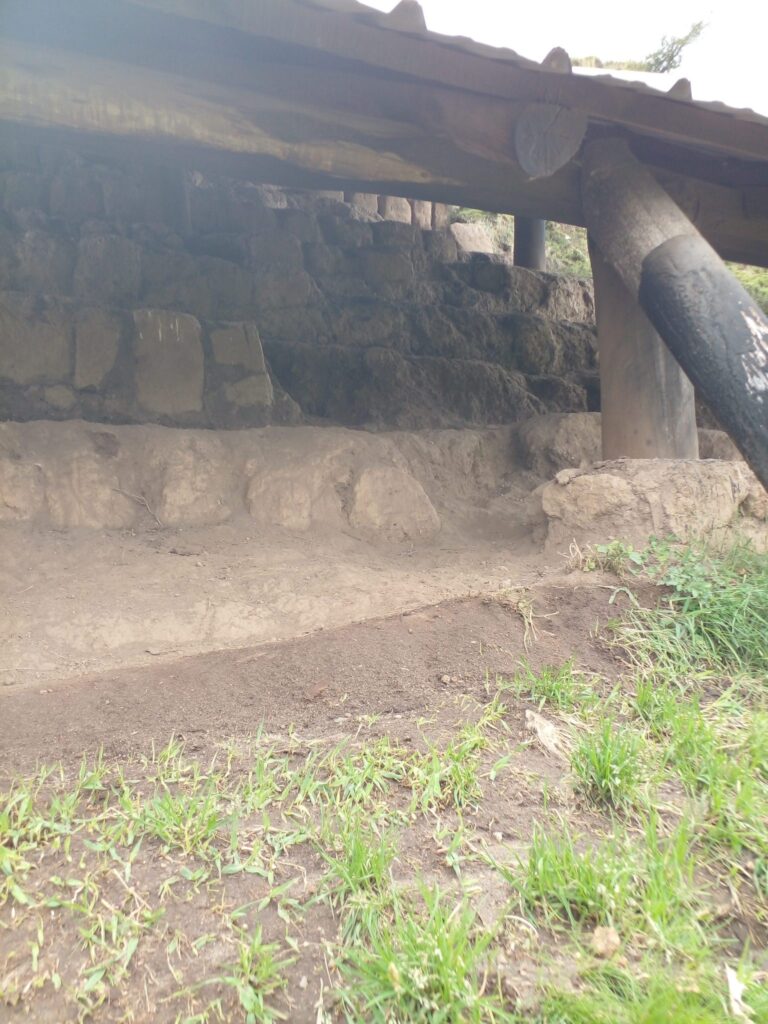
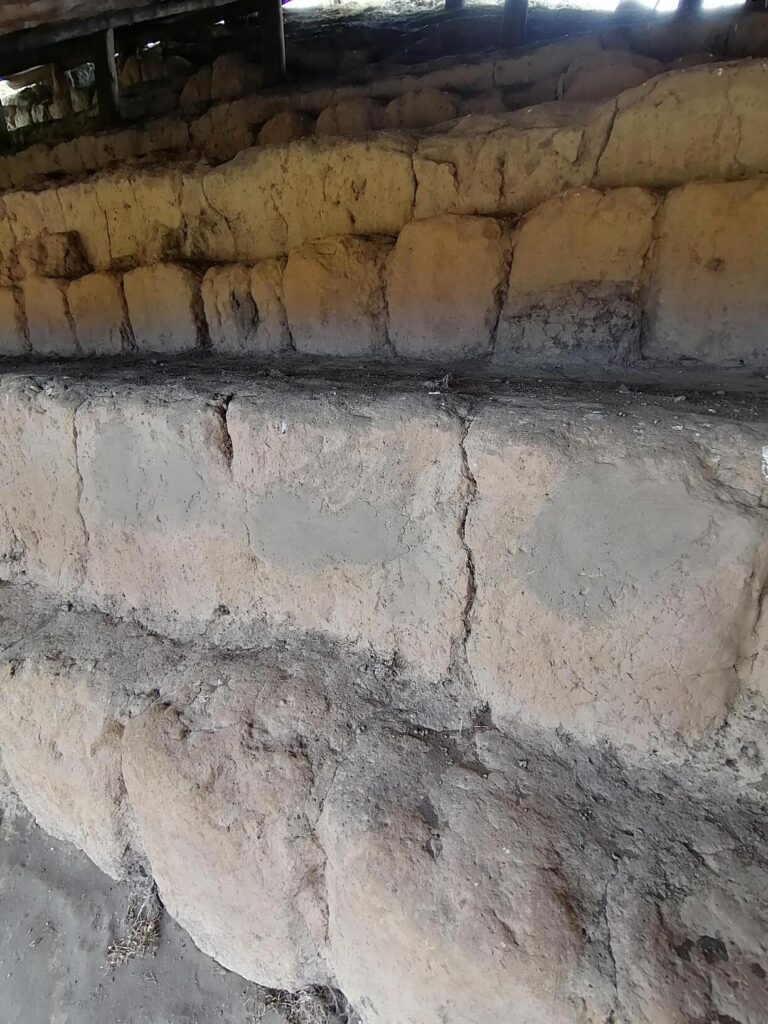
- The first serious scientific work was executed by the German archaeologist Max Uhle in 1932, who worked in all the Andean countries. In the 1960s a follow up was coordinated by his fellow countryman, the ethnologist Udo Oberem.
Between & besides the pyramids, you can spot the so-called Tolas or Burial mounds. The biggest ones were built for the local elite. Smaller ones for the common people.
- In one of the central pyramids (the severely damaged #9) Max Uhle found around 600 skulls. They probably belonged to people sacrificed during a special ceremony.
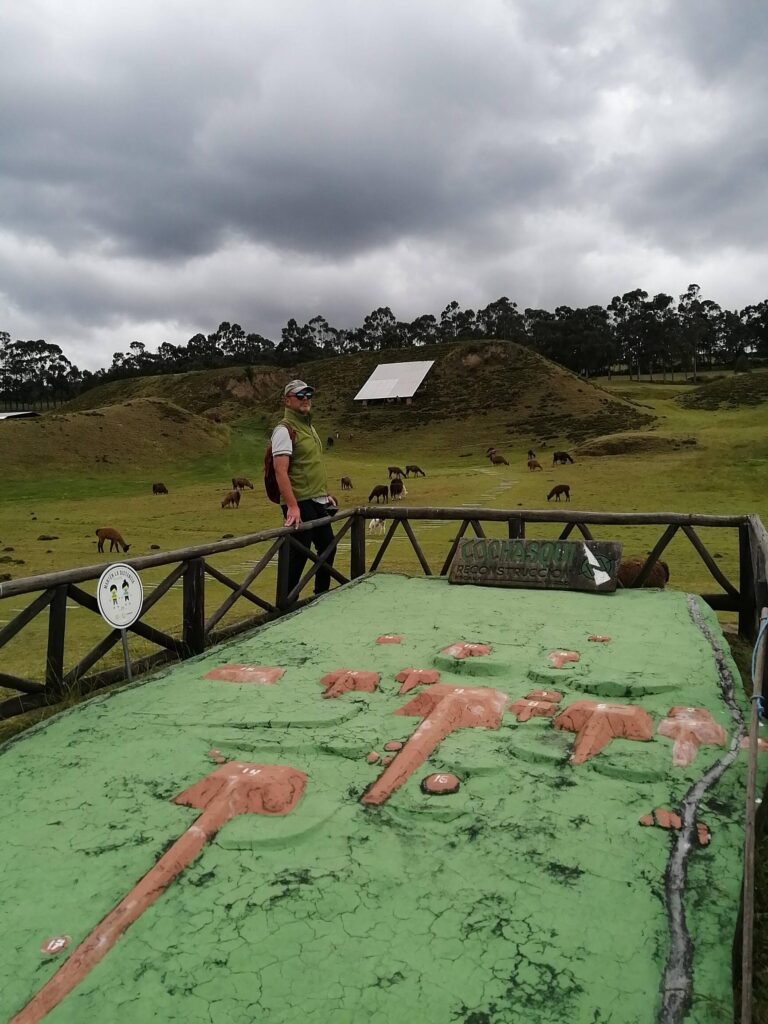
The two museums you’ll visit at Cochasqui
On the premises there are two small museums. You’ll visit both at the end of the guided tour of the Cochasqui site.
The first one is an Ethnographic museum, which is actually a typical andean house or choza, furnished as it was in the past…
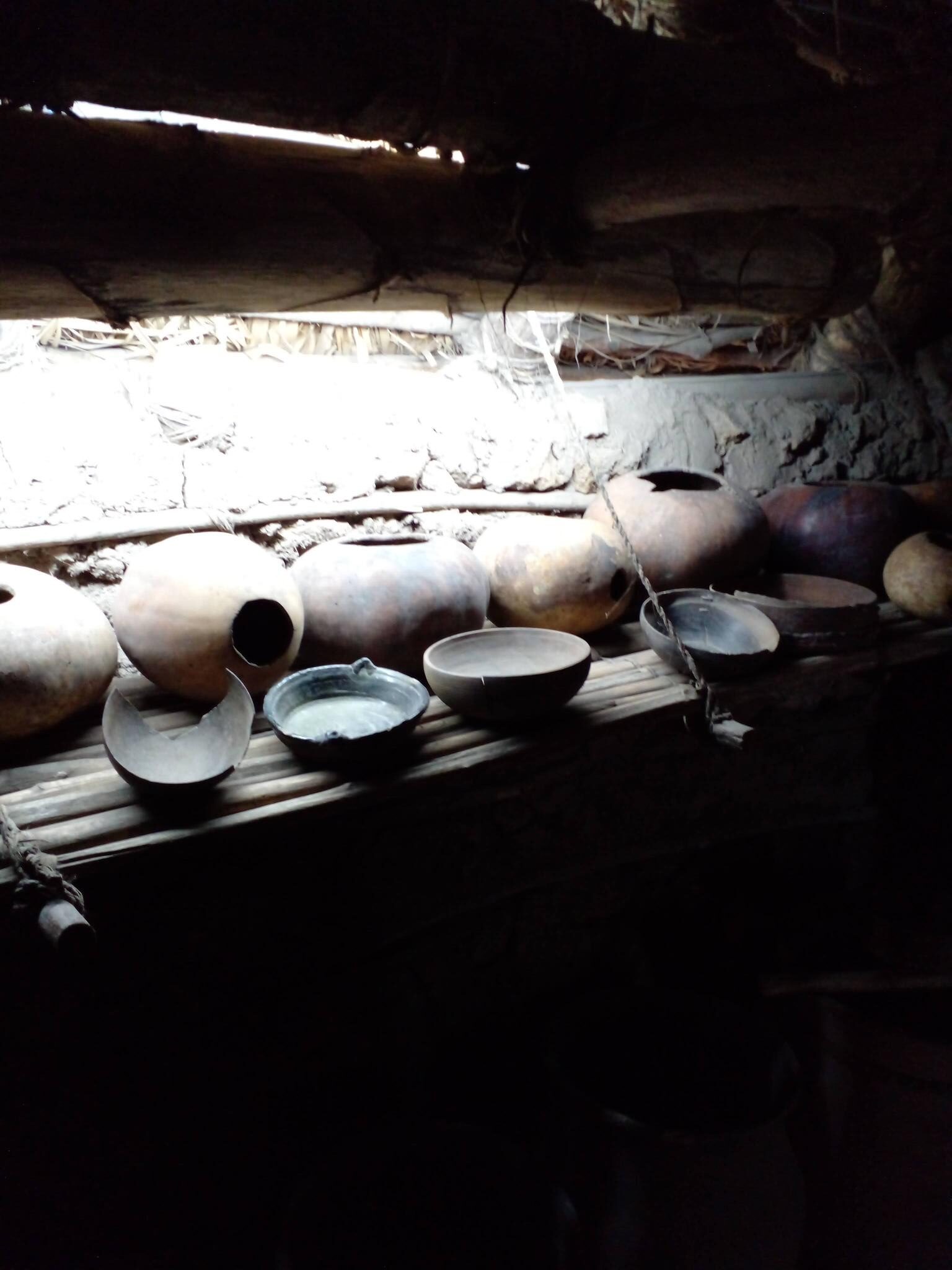
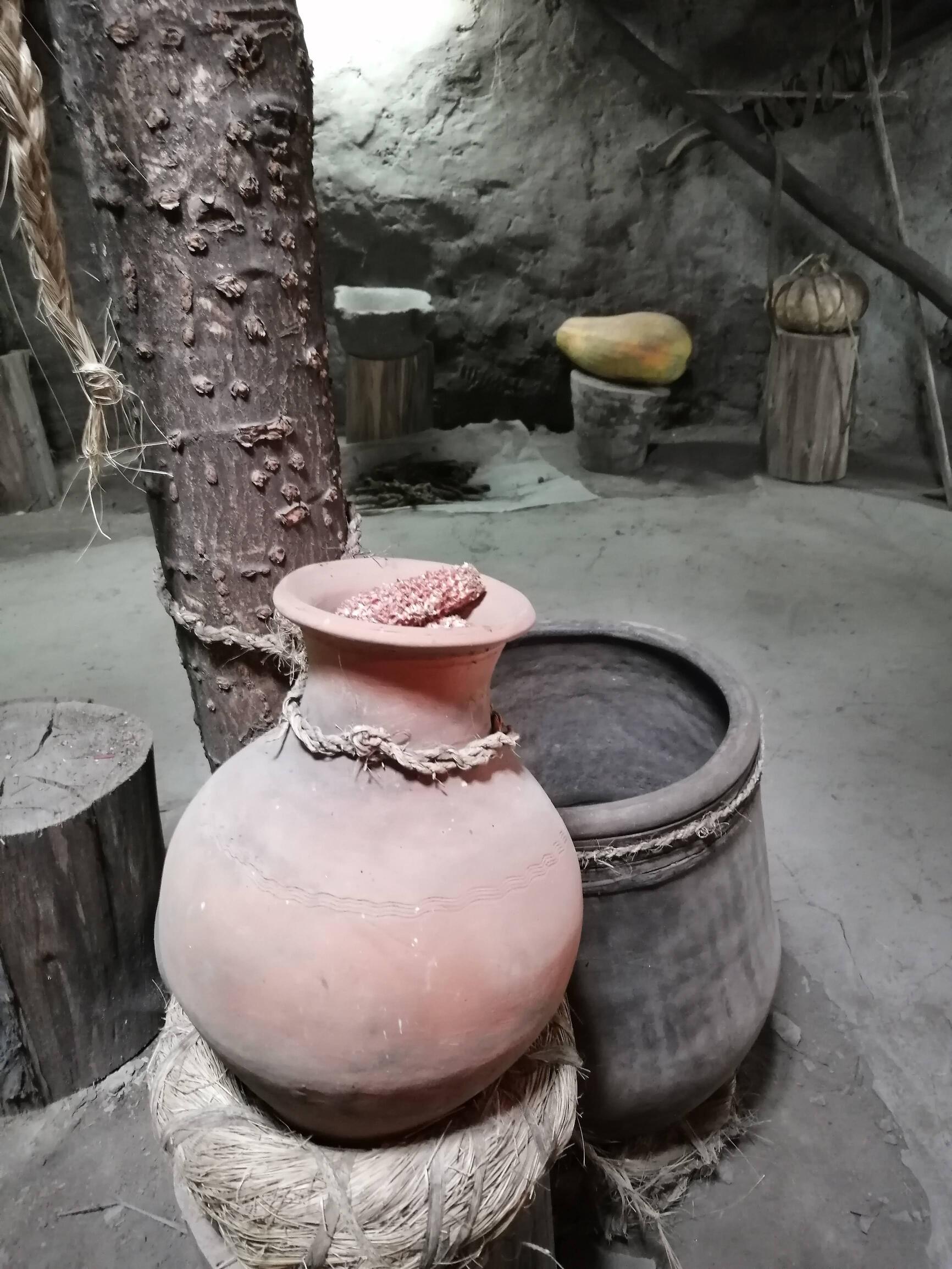
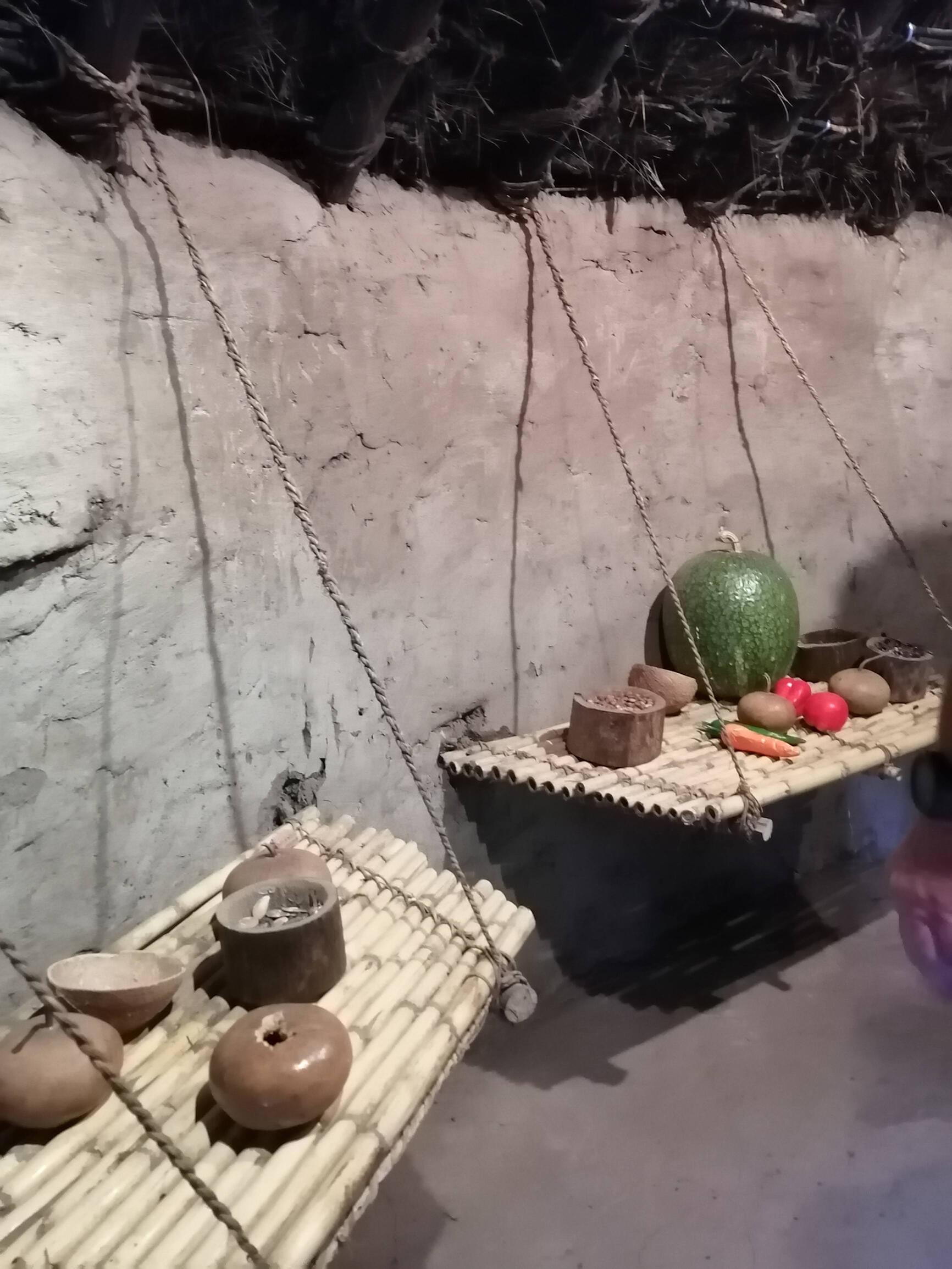
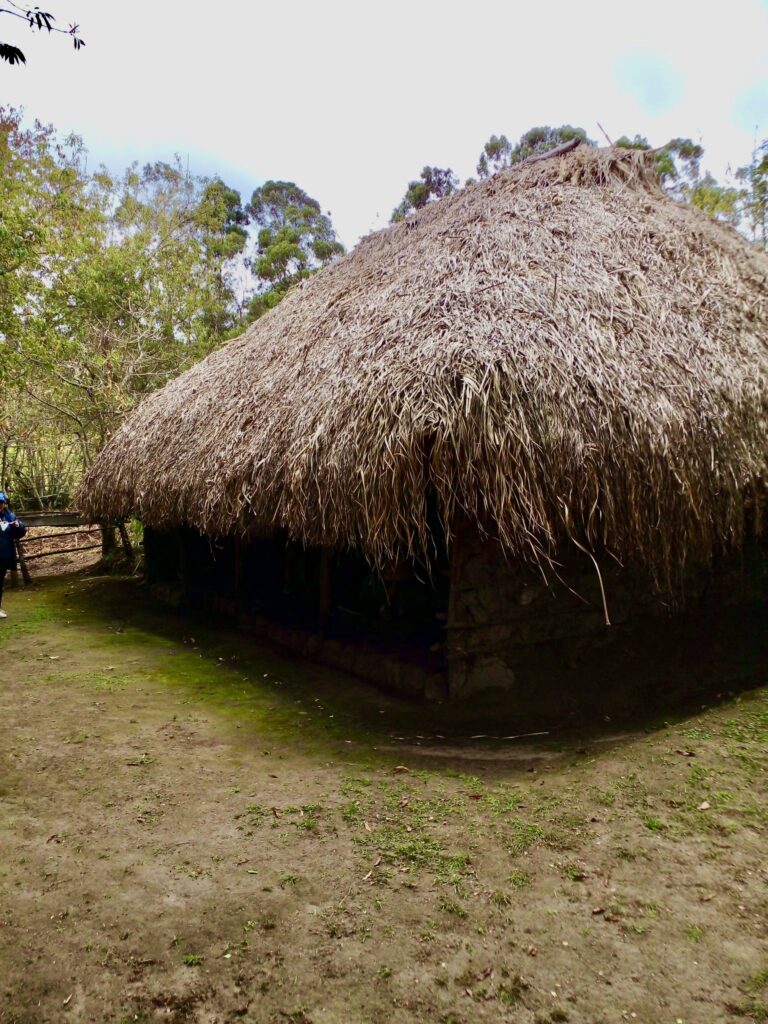
.
Well, that’s formally not exactly true...!
In certain regions of Ecuador you can still find indigenous people who live in these chozas. Mostly in the highest parts, around & above 3000m/ 10000ft.
One may think it’s only because of poverty, which is one reason. Obviously, the houses are built of cheap natural materials found in the immediate vicinity….
However, another reason to keep building them is the fact that these chozas in many ways are better equipped against the harsh, cold Andean climate than modern day houses of wood, brick & steel. That’s why they are lowly built and the roof – made of thick straw or paja – reaches to the ground.
You can get an idea of the Andean house at Cochasqui inside & out. As well as get an impression of the parcel around, with typical Andean crops, like potatoes, corn, pumpkins, beans (like for example chochos)… Depending on the season of course.
- In earlier times another important crop were the leaves of sacred coca-plant (Erythroxylon coca). Mainly used by the elite & during ceremonies.
At the end of the tour you visit the Archaeological museum. Although also small, there are some interesting finds gathered in this museum corresponding to the long history the Pre-Inca site of Cochasqui is hiding.
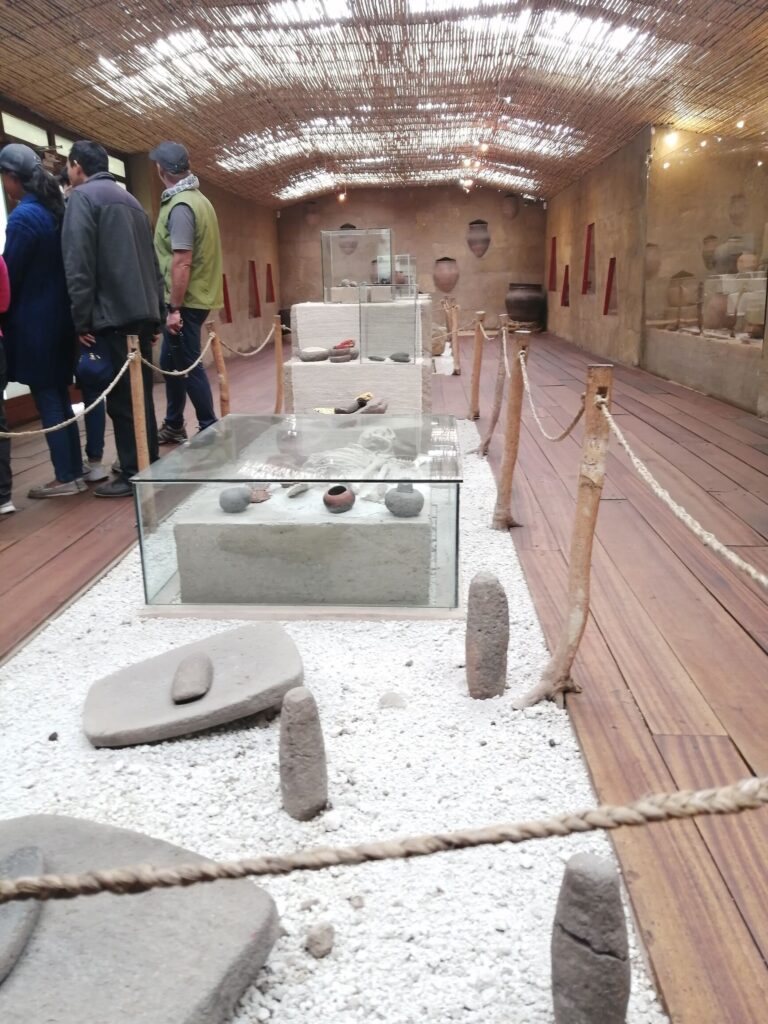
A little history of Chochasqui
Although most experts think the actual site was constructed between 850 AD and the Spanish conquest in the 1530’s, it’s very likely the area was inhabited much earlier.
It was probably people of the Caranqui culture who built the pyramids. An ethnic group which thrived in this Andean region between 700 and 1500 AD.
In the second half of the 15th century Cochasqui & surrounding area was – after fierce resistance – conquered by the Inca’s. An invading force who came in from the south, nowadays Peru.
- Legend has it that during the Inca conquest – after strong resistance – Queen Quilago of Cochasqui was forced to marry the emperor of the Inca’s Huayna Capac. Some even think it’s possible that Huayna Capac’s successor Atahualpa was their son.
*****
A center for study
Most experts think Cochasqui was principally a ceremonial and astronomical center. An observatory on the top of one of the highest constructions – with calendars that correspond to the Sun & the Moon – is a clear indication the former elite (rulers, priests, scientists) knew very well the settlement was located on a very special place on earth.
That is, very near the imaginary line we nowadays call the Equator.
- During excavations archaeologists discovered that all the pyramids had ceremonial platforms for different purposes.
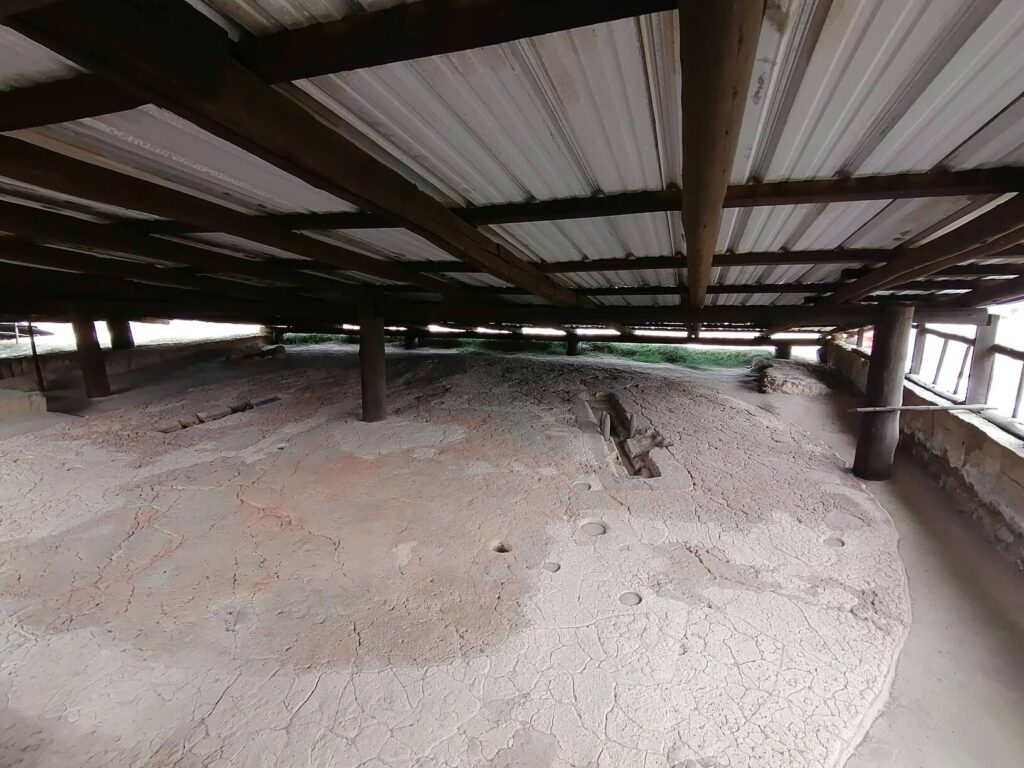
- The name Cochasqui confirms this fact. Although not its original name – because it’s an Inca name in Quichua – Cochasqui means something like “the Lake in the Middle”. (Cocha = Lake & Qui = Middle).
- Ironically – going back to the 18th century French mission (see above) – the former indigenous inhabitants of Cochasqui could tell the Frenchmen much more about the unique location of their country as the few white scientists they met in Ecuador at the time. (Some French scientists visited the ruins of Cochasqui almost at the end of their mission).
- The main goal of studying the skies & determining the solstices and equinoxes was connected with daily life. When to crop, when to harvest… when to pray to the gods, to celebrate, to rest & work.…
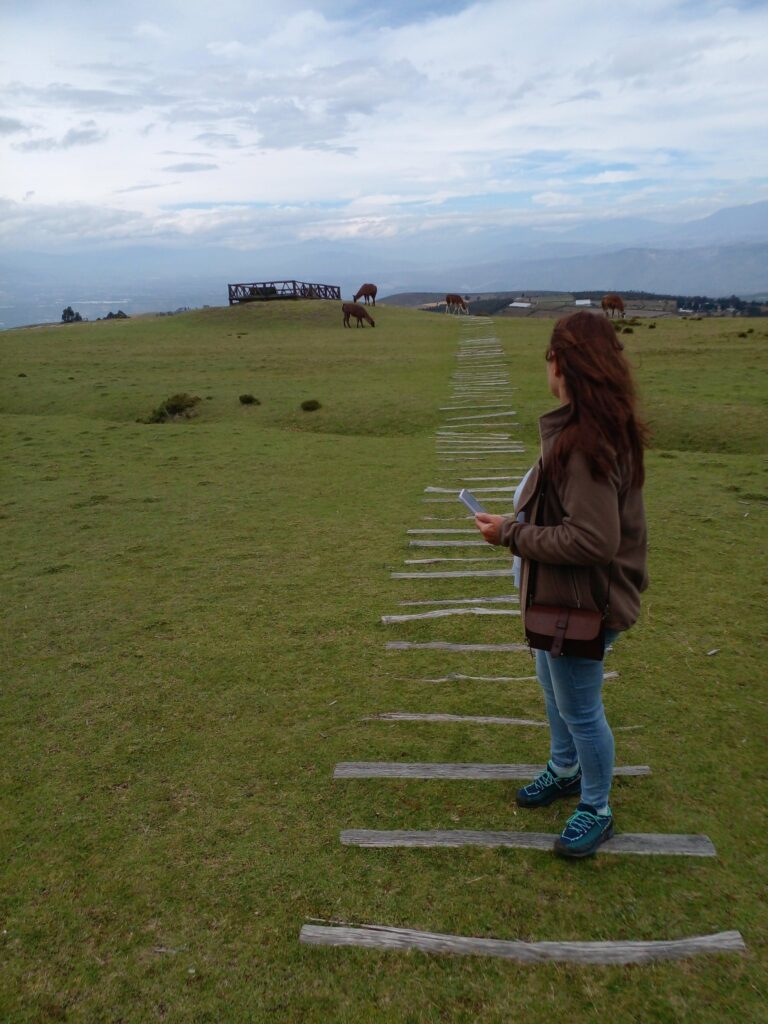
A military fortress
Besides a scientific purpose, the settlement probably also served a military-strategical one. Logically, when you look around again & notice you can see an enormous part of the surrounding area (a big part of northern Ecuador actually).
The local elite probably lived on or very near the pyramids. While at a certain time an estimated three thousands people lived around, dedicated mainly to agriculture.
Tourist-Info for a visit to Cochasqui
Opening hours of the park: Daily, from 8 until 17 hours.
Entrance price is $3,00 for foreign visitors, $1,00 for locals. Half the price for children & people over 65.
Parking costs an additional $1.
- All the proceeds are for the maintenance of the park & serve the local community around.
IMPORTANT! A few years ago there were several robberies in the parking lot just outside the Archaeological site. Fortunately, no direct hits on persons, but car windows that were smashed in & goods stolen. After the community heard about these crimes they acted & took over the management. With the result, that nowadays it’s safe again.
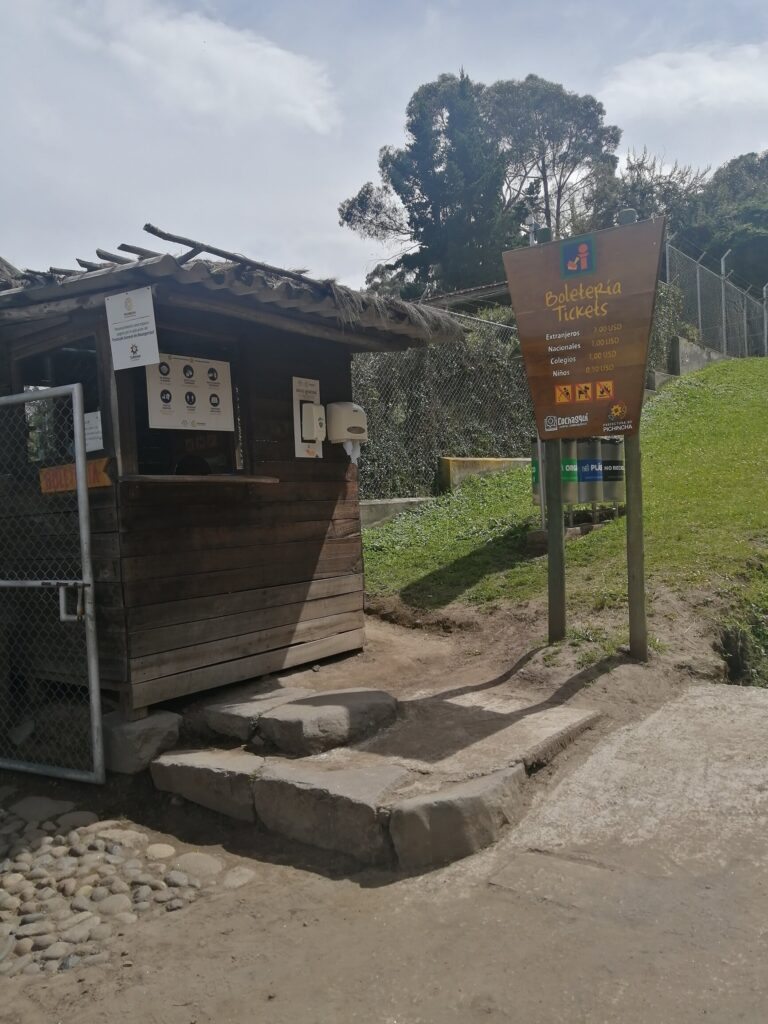
From Wednesday until Sunday all visitors are guided through the park. Most guides speak Spanish, but some also English. The guided tours have no additional costs, but a little tip to the guide is always appreciated.
You start with a tour of the Archaeological site itself, with regular stops in which the guide tells you about the hstory & the constructions.
This tour ends on a small tribune where you can sit down overlooking the whole area – an ideal spot to be told about Cochasqui’s unique location.
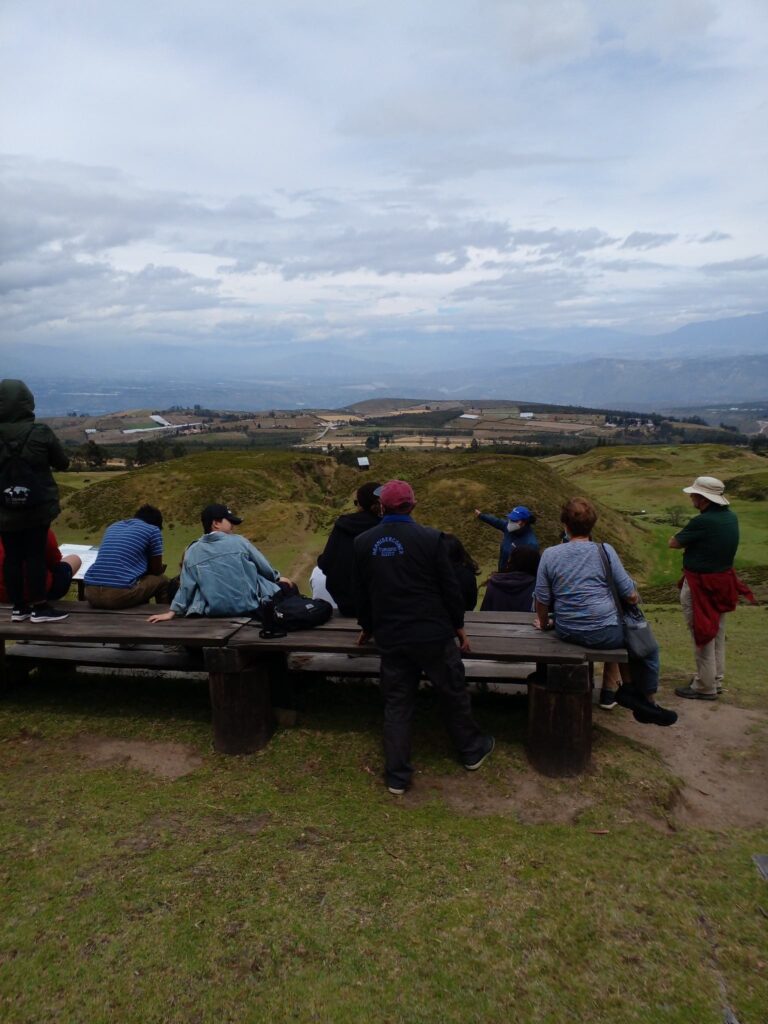
You’ll continue the tour taking an old indigenous road.
- Although this road – most probably – also is Pre-Inca it’s restored in Inca-style. In other words, part of the famous roads or Qhapaq Ñan the Inca’s constructed throughout their enormous Empire – The Tihuantisuyo.
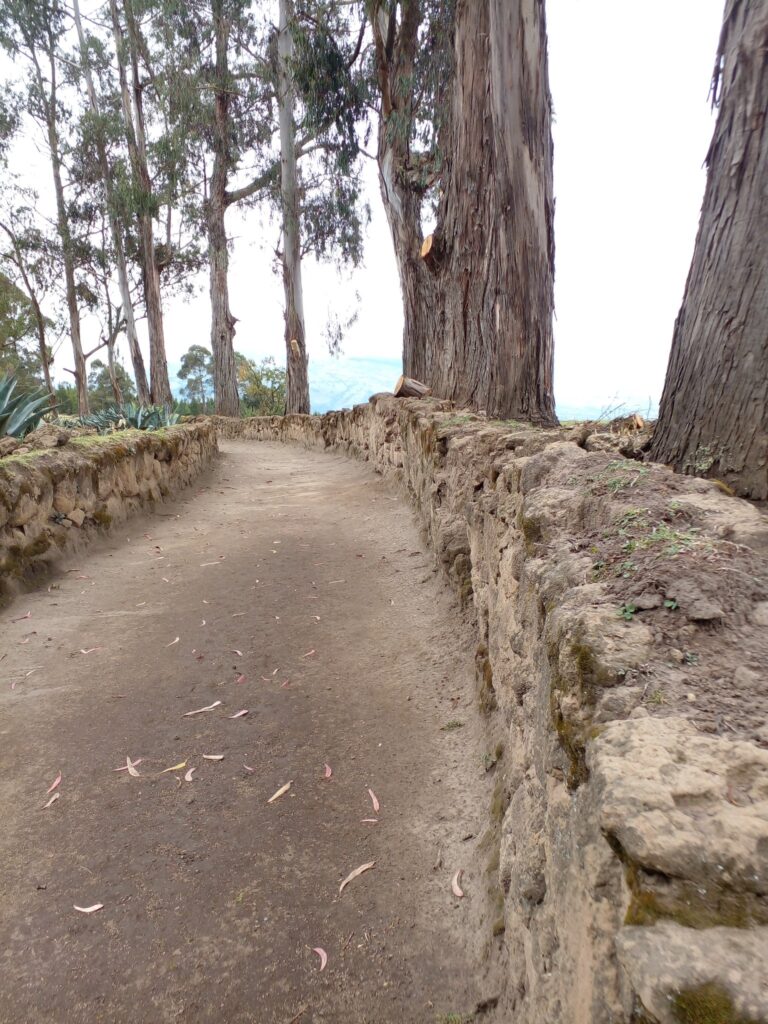
This road takes you first to the “former” Andean peasants house or choza, and finally the Archaeological museum.
All in all the guided tour takes around an hour.
*****
Animal life in & around the Cochasqui Archaeological site
Besides the llamas – you’ll certainly encounter them – you can spot other wildlife in & around the pyramids.
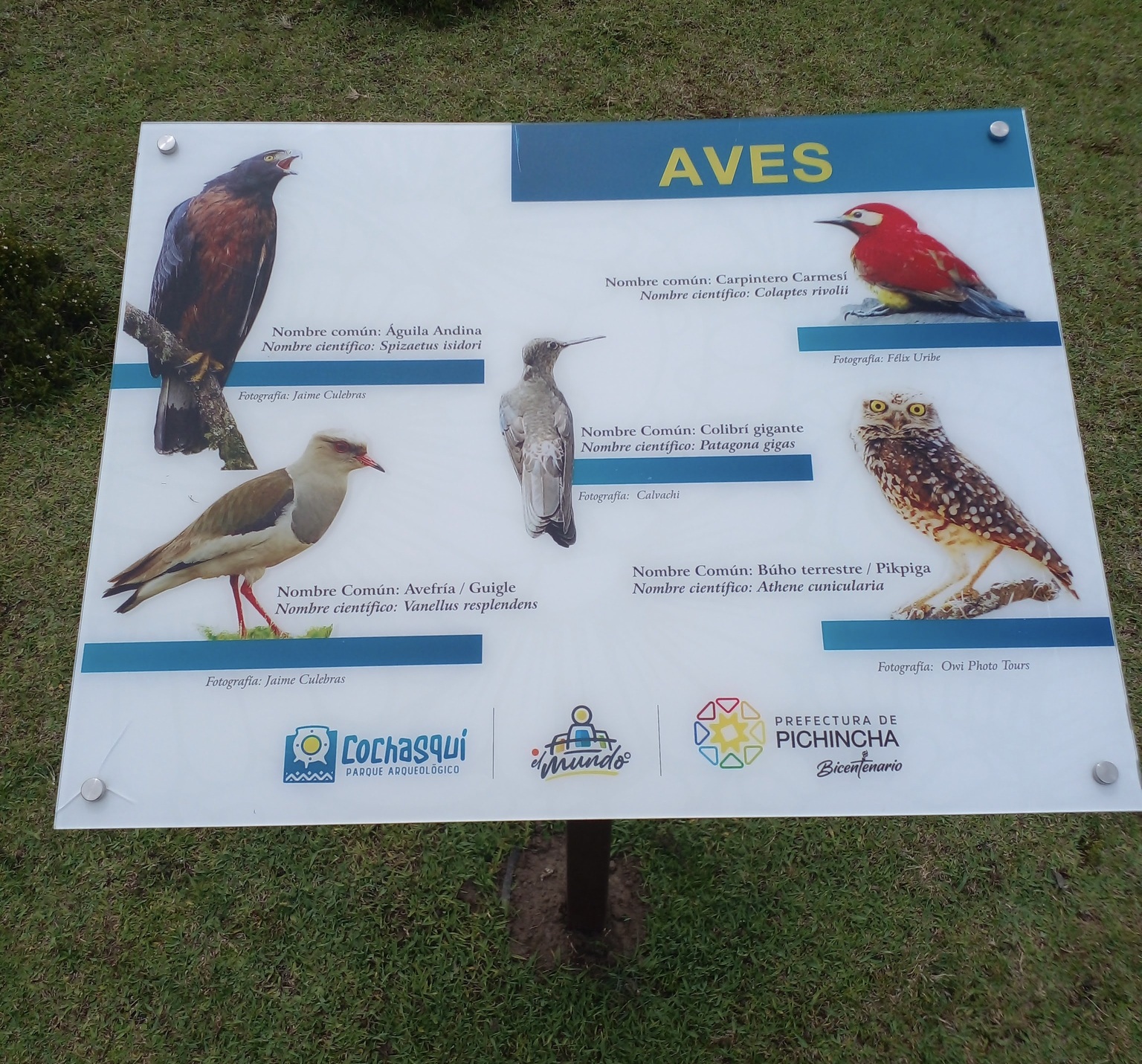
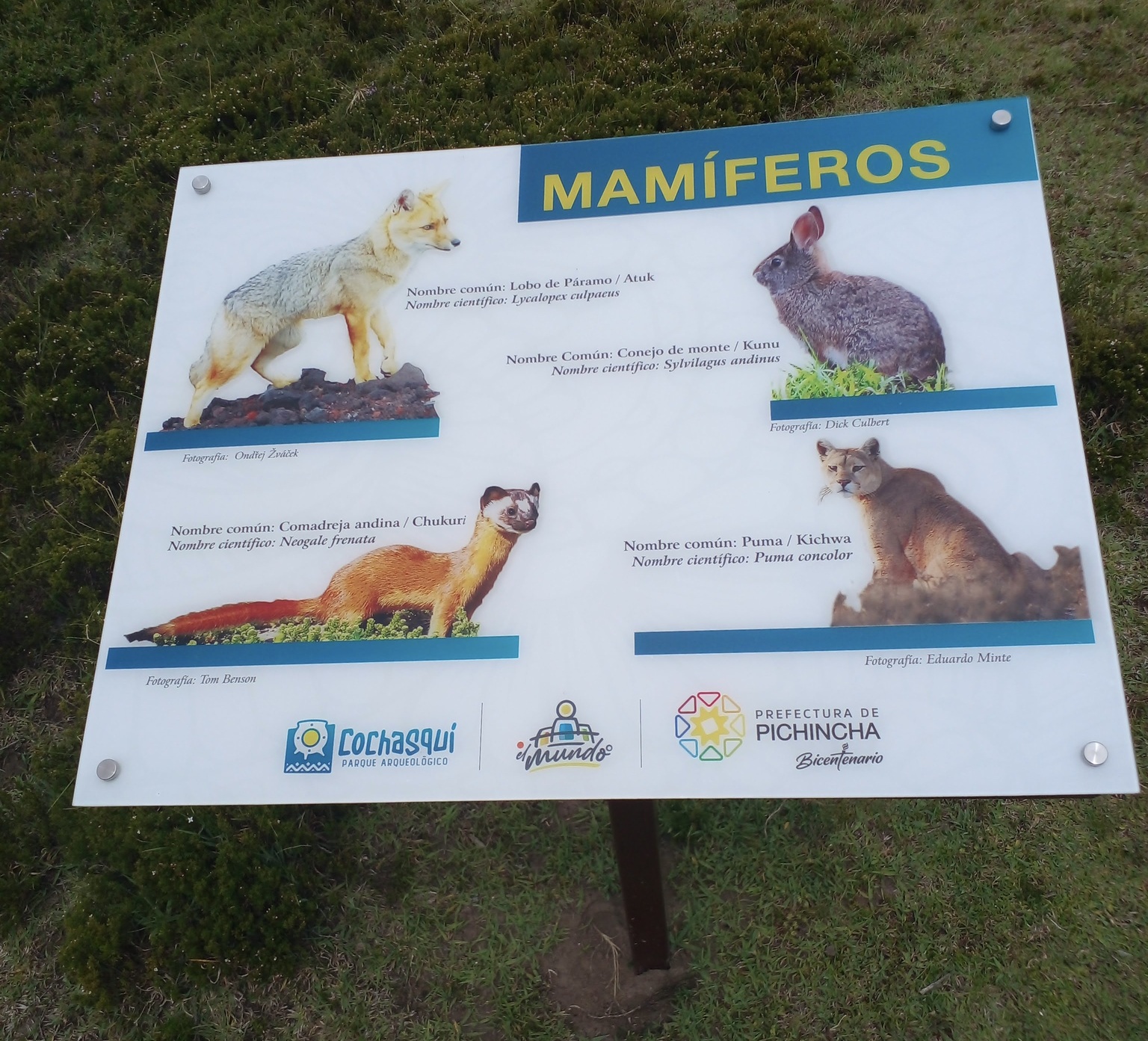
*****
Cochasqui local market
On the festive days there’s a little market with handicrafts & locally made snacks.
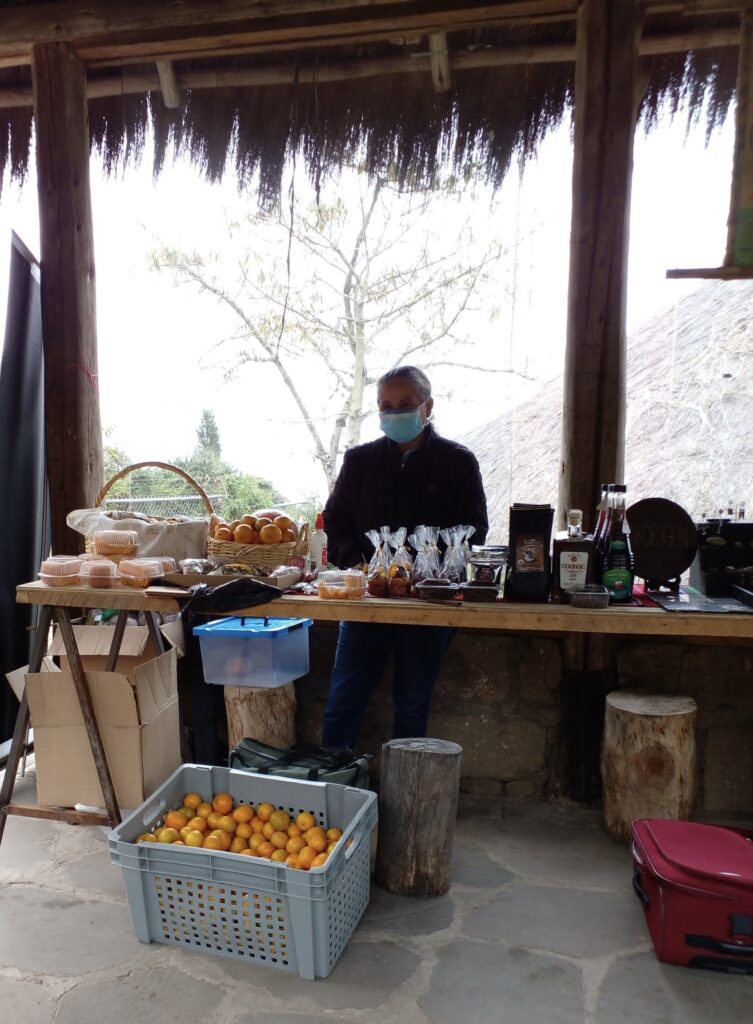
Have a bite
Besides that, between the park’s entrance & the parking lot you’ll find some popular restaurants where you can order some typical Andean dishes like Choclo con Queso, Fritada, Caldo de Gallina & others (Don’t forget to ask for the Spicy sause, called Ají).
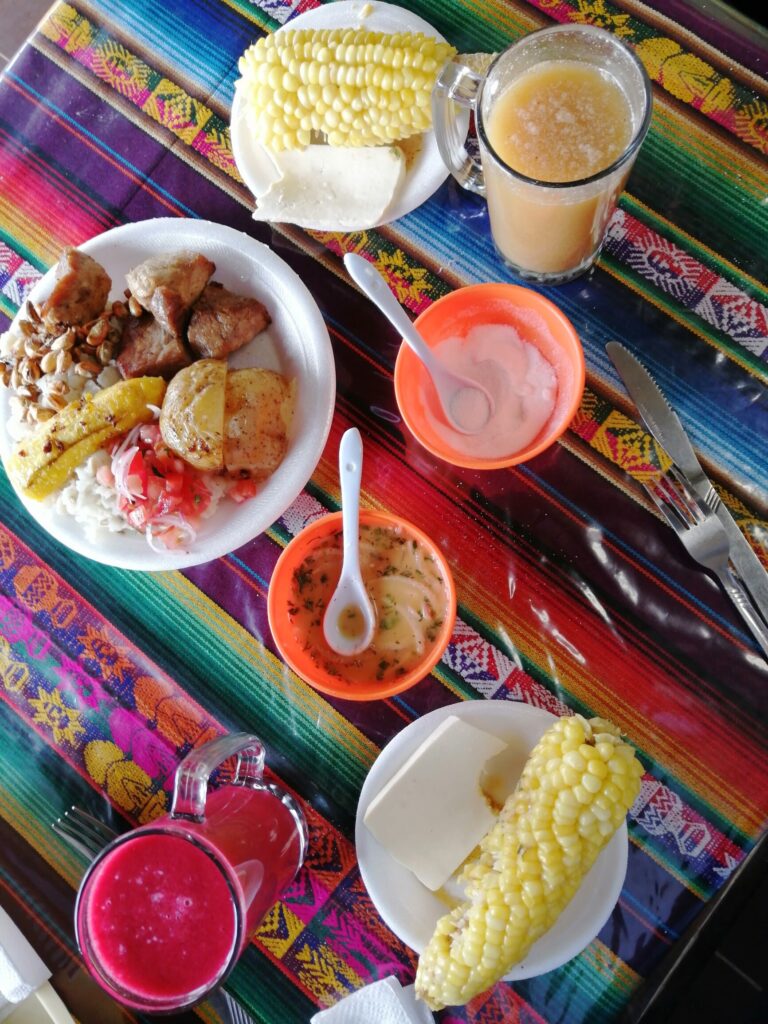
How to get to the Cochasqui Archaeological Park
Cochasqui is located almost exactly between Ecuador’s capital Quito & the Andean market town of Otavalo. In other words, you can visit Cochasqui easily from both ends.
By Bus:
For the (low budget) adventurer, it’s possible to get close to the site by bus.
- You can either take a northern bus (Quito-Otavalo or vice versa) and ask the driver to drop you off at the nearest point to the site. From the Panamericana you have to hike up to the Archaeological Park in a few hours. Or – if lucky – encounter a ride or taxi on the way up.
- Alternatively, you can travel by bus to Cayambe and from there catch a bus to Malchinguí (4 daily). This is the bus that gets closest to the park. In this case, again, ask the driver to drop you off as close to the park as possible & walk the last part or find a lift.
IMPORTANT to know for the hiker-adventurer: It’s possible to camp near the Archaeological site.
By Car:
The easiest way to get to the Cochasqui Archaeological site is by car.
- When you’re coming from Quito, you have to follow the Panamericana Norte until kilometer 52 (just past the Cochasqui Toll Station). There you exit the highway, turning left following the road-signs to the Cochasqui Park.
- However, when you start your visit to Cochasqui from Otavalo you can take a more northern exit of the “Pana” (Watch out for the road sign, see photo below). An alternative road which first traverses the little village of Tocachi, before you arrive at the site.
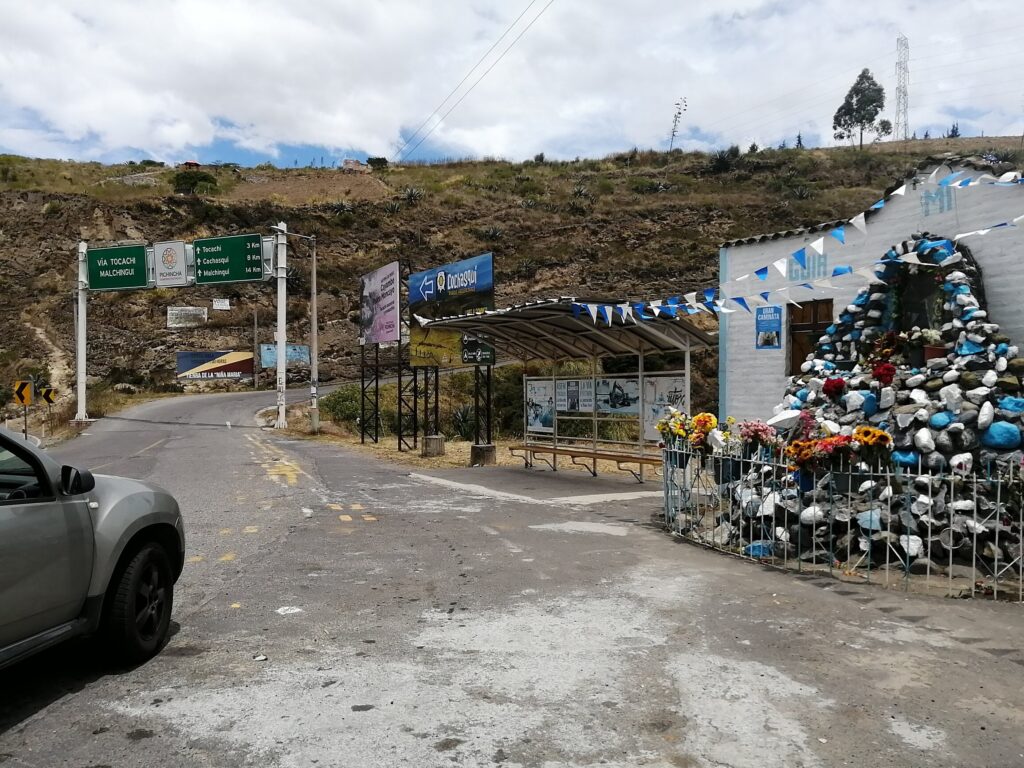
Organised tours:
In Quito you can find several agencies who organise tours to several destinations near the capital. Mindo, Cotopaxi, Papallacta, …. As well as a Tour to Cochasqui.
To learn more, click on: Viator Tour to the Cochasqui Pyramids (also including a visit to a Rose Plantation & Equator Line near Cayambe).
- The same international tour agencies, and even some hotels, also offer visitors to Quito to make day-trips further away. Tours to Baños, the Quilotoa lake, and Otavalo (!).
- A practice we – logically – abhor, running a Hotel/restaurant in Otavalo. Centrally located in one of the most beautiful & green provinces of the country, with lots of: Things to do in & around Otavalo.
By Taxi:
One of those attractions is a visit to the Cochasqui Pyramids. A visit we – at Hotel Doña Esther/Restaurante Árbol de Montalvo – can organise for you. Providing you with a friendly, professional driver/guide at a good price.
- In a normal car there’s room for max 4 pax. If you travel with more people (and luggage if on your way to or from your next destination) we can arrange bigger transport – a mini-van or bus – provided by a local company.
- IMPORTANT: We can only provide this service to our hotel guests.

There are several options, like:
- A half-a-day trip from Otavalo to the Cochasqui Archaelogical Park
- Combining a visit to Cochasqui with other attractions nearby (like the alternative Mitad del Mundo, Pambamarca or the Condor Park (to name a few).
- Visit Cochasqui on your way to or from the Quito Airport.
- We can prepare a take-away box lunch ($6.00 each) for you at the hotel.
Contact us:
Just write to us with your questions & wishes, and we will help you out:
.
Some last Photo Impressions of our latest visit to Cochasqui
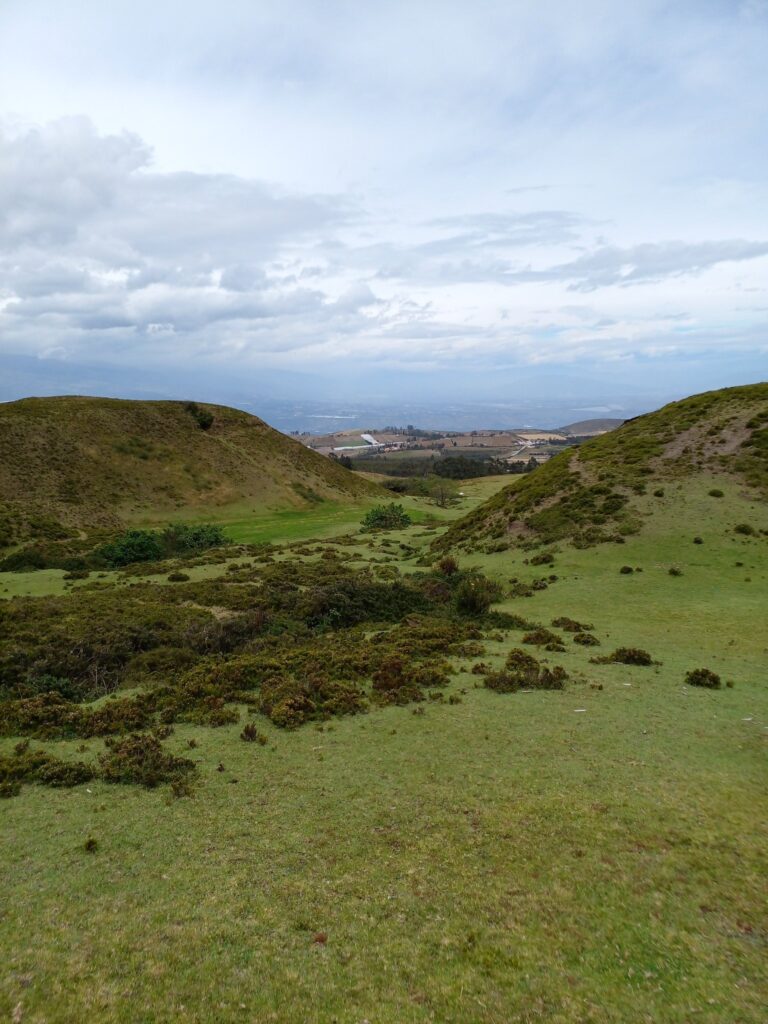
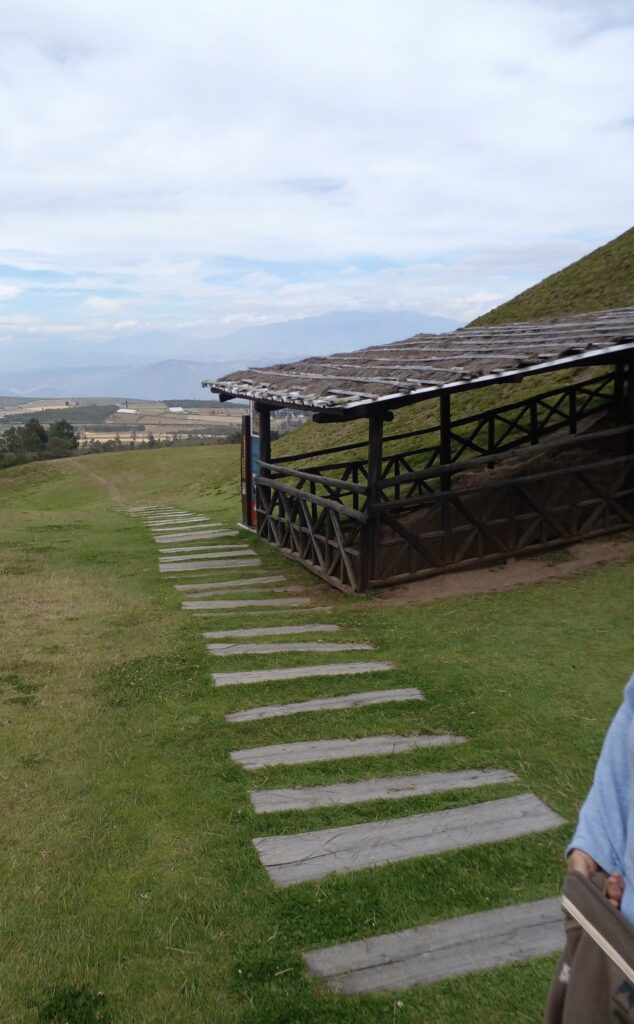
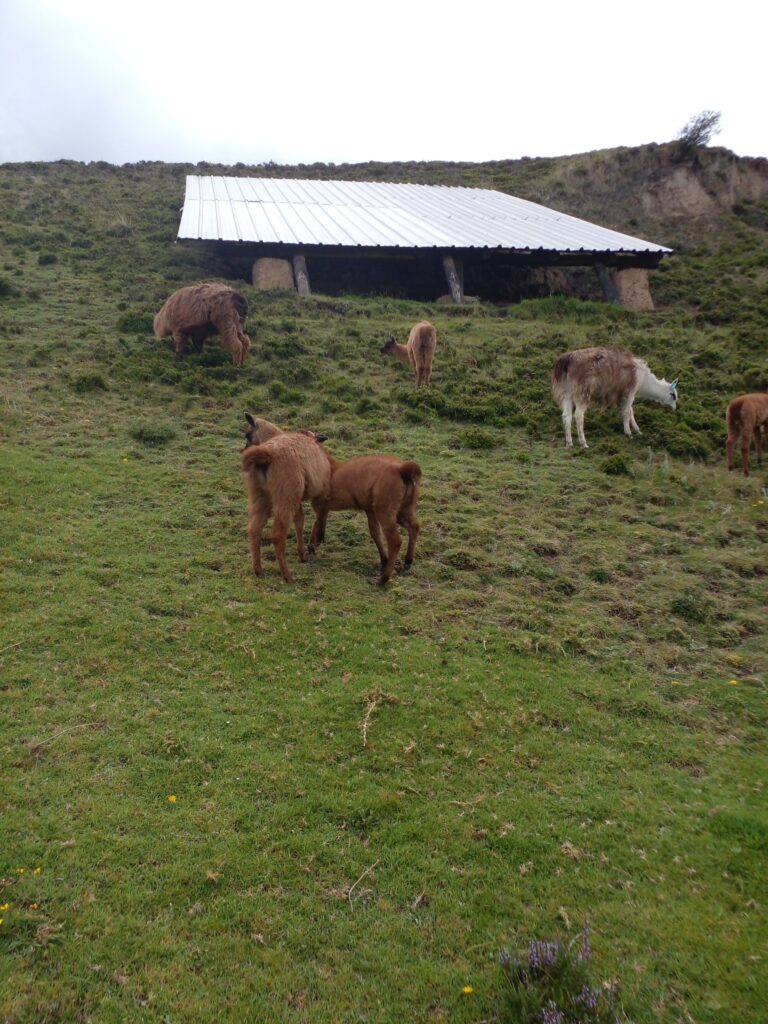
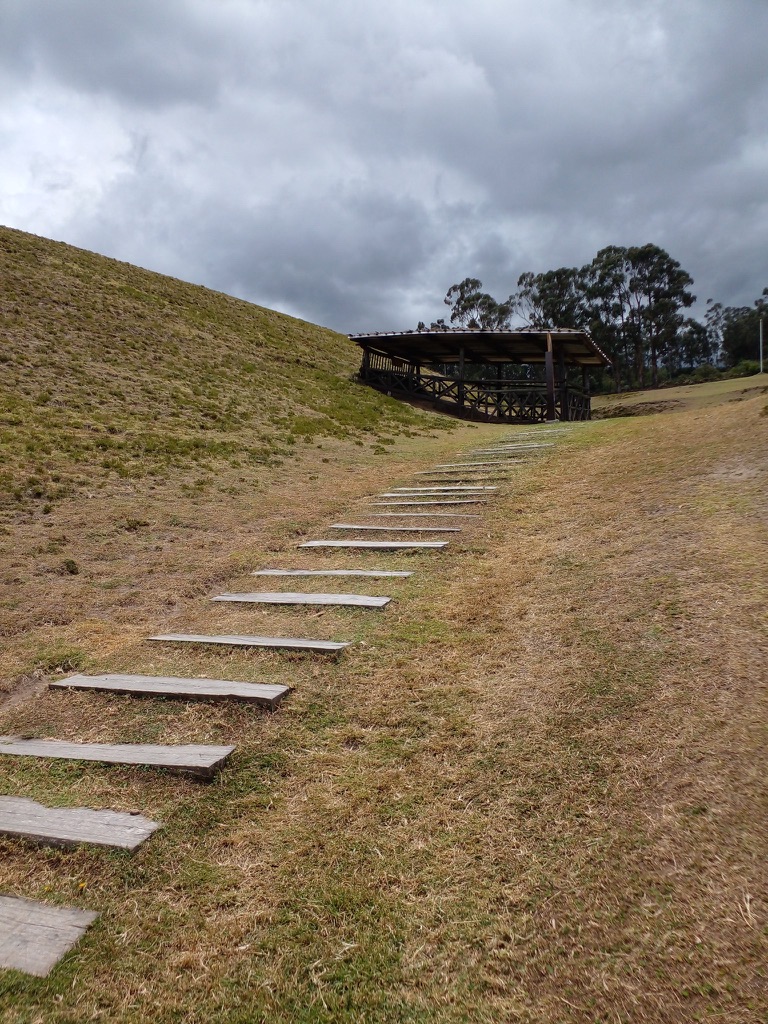
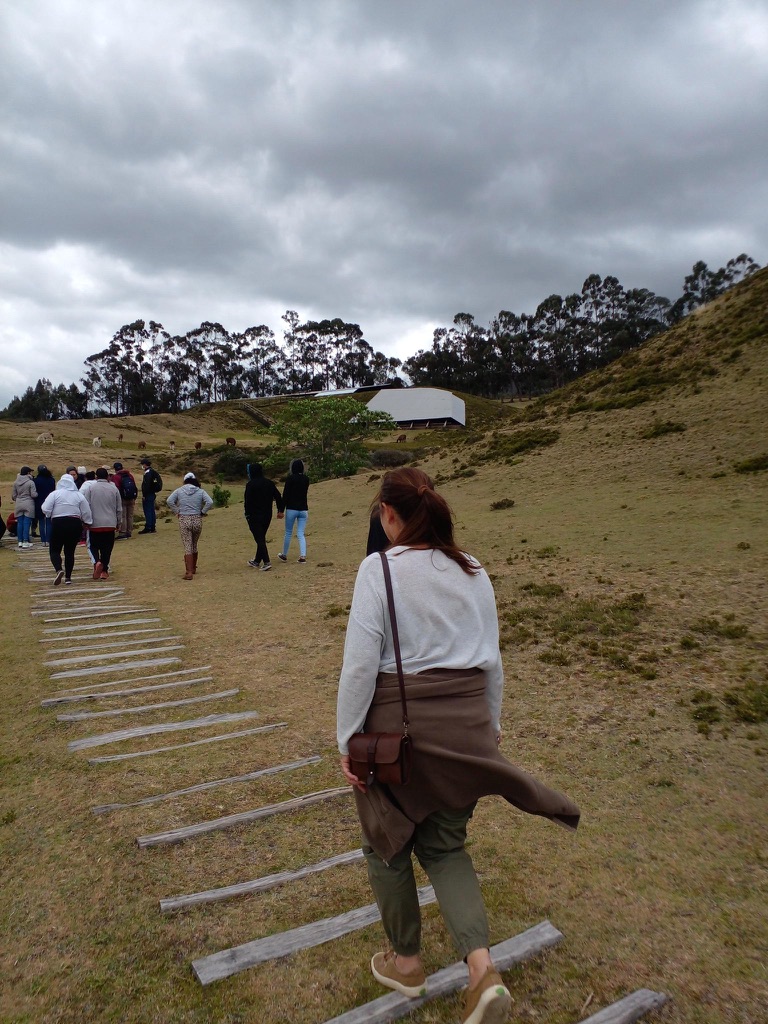
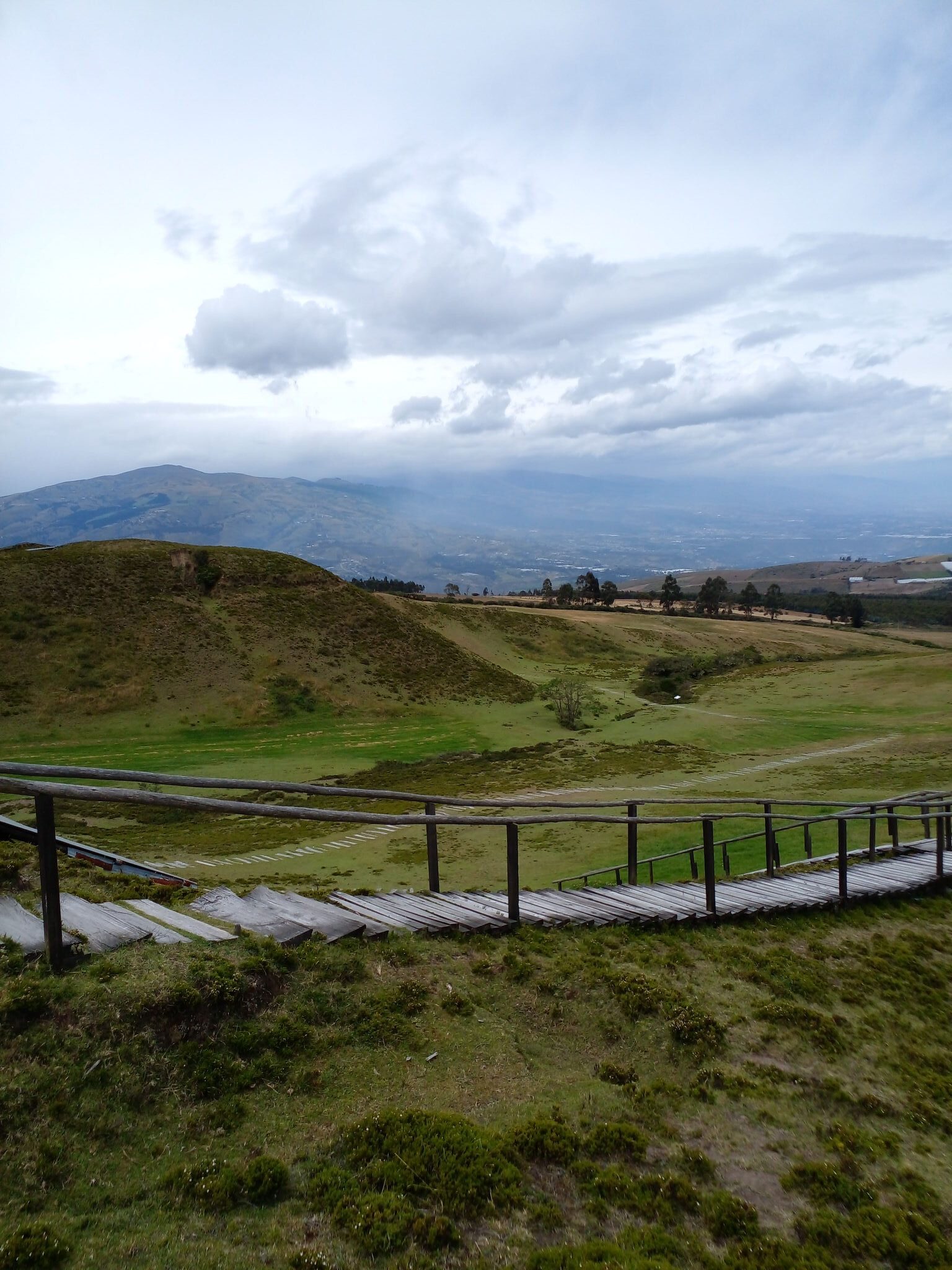
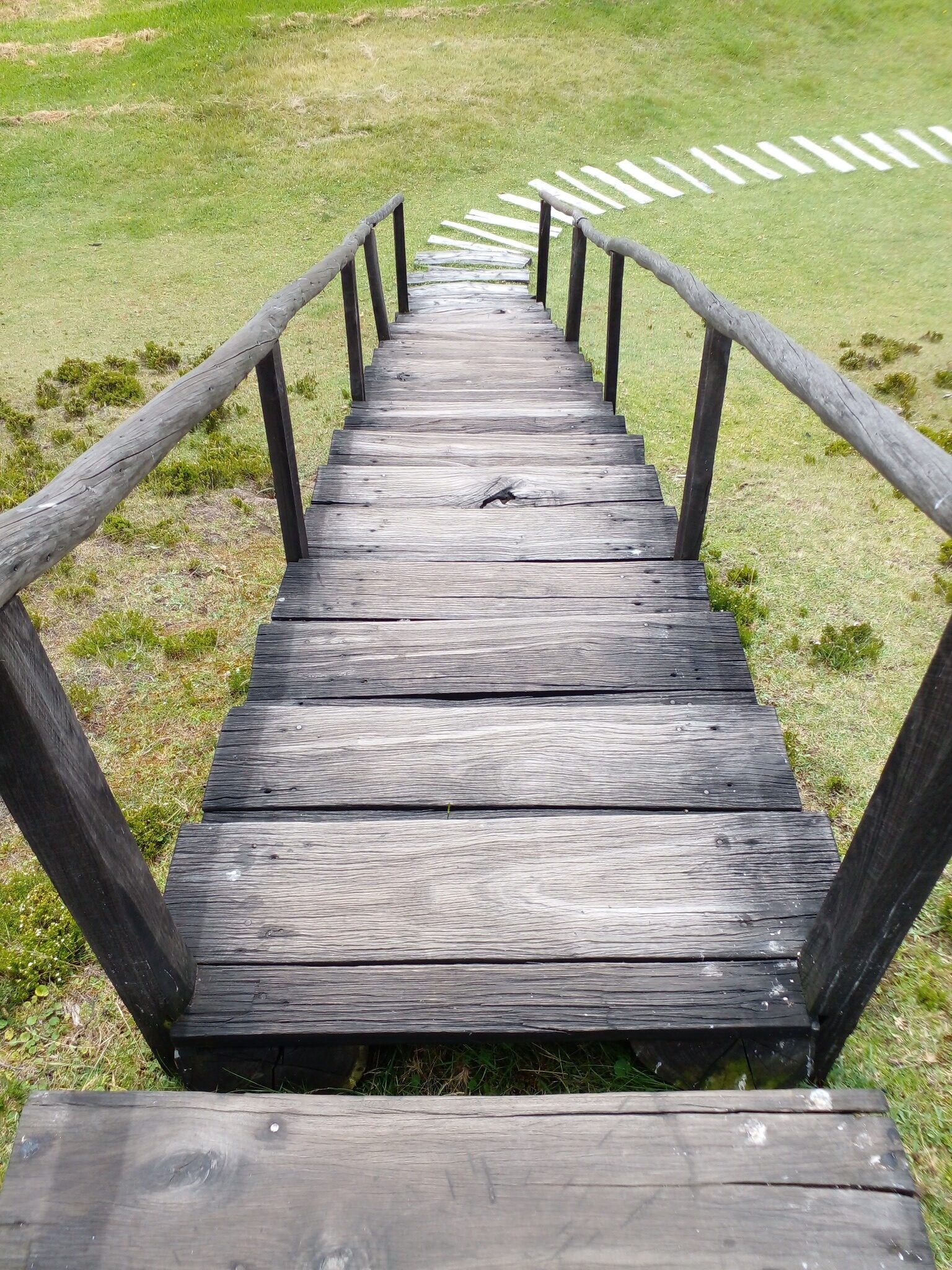
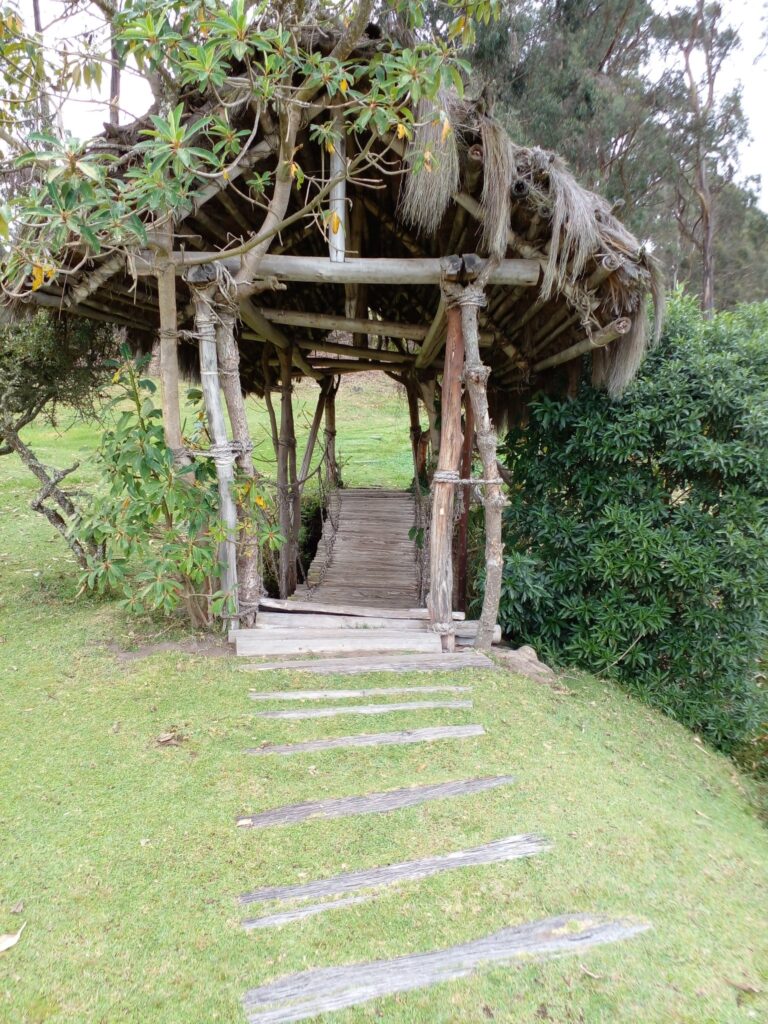
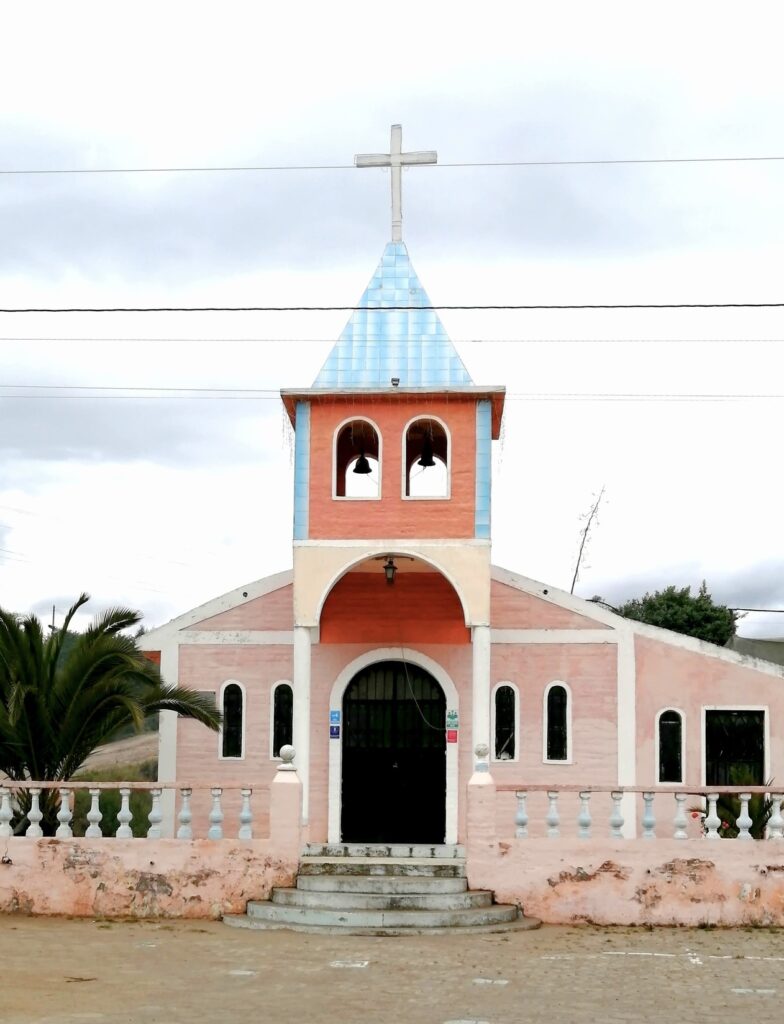
- For all the latest news on Ecuador, join my Visit Ecuador Facebook Group.
.
For other Things to do in & around Otavalo, go to: Otavalo Attractions
For an overview of all travel posts of my blog, go to: the Home Page.
One thought on “A visit of the beautiful Pre-Inca site of Cochasqui, Ecuador”
Comments are closed.